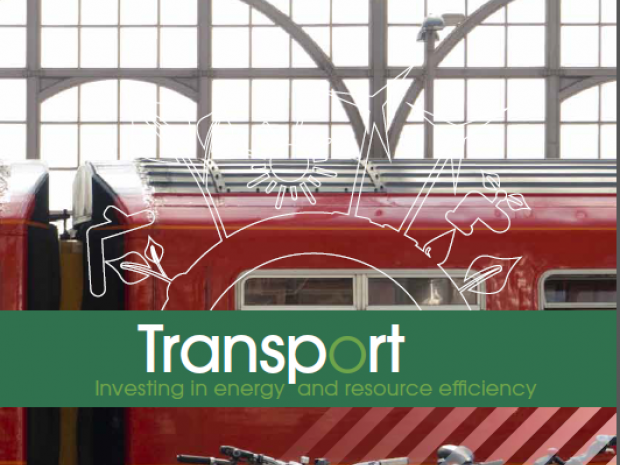Towards A green Economy: Transport

Key messages
1. Present patterns of transportation – based mainly on petrol and diesel-fuelled motor vehicles – generate serious social, environmental and economic damage and are highly unsustainable.
At present, transportation consumes more than half of global liquid fossil fuels; emits nearly a quarter of the world’s energy-related CO2; generates more than 80 per cent of the air pollution in cities in developing countries; results in more than 1.27 million fatal traffic accidents per year; and produces chronic traffic congestion in many of the world’s urban areas. These costs to society, which can add up to more than 10 per cent of a country’s GDP, are likely to grow, primarily because of the expected growth of the global vehicle fleet.
2. “Business-as-usual” will significantly enlarge vehicle fleets and exacerbate their costs to society.
If we continue on a “business-as-usual” path, the global vehicle fleet is set to increase from around 800 million to between 2 and 3 billion by 2050. Most of this growth will take place in developing countries. Aviation growth is expected to increase exponentially in the coming decades, fuelled largely by income growth in developing countries. Carbon emissions from shipping could also grow by up to 250 per cent.
3. A three-pronged investment strategy is needed to transform this sector: promote access instead of mobility; shift to less harmful modes of transportation; and improve vehicles towards lower carbon intensity and pollution.
A fundamental shift in investment patterns is needed, based on the principles of :
■ Avoiding or reducing trips.
■ Shifting to more environmentally efficient modes such as public and non-motorised transport (for passenger transport) and to rail and water transport (for freight) is recommended.
■ Improving vehicles and fuels to reduce urban air pollution.
4. Investment in public transportation and vehicle efficiency improvements generates exceptional economic returns.
Several scenarios show that a green, low carbon, transport sector can reduce greenhouse gas emissions by 70 per cent without major additional investment. A reallocation of just 0.16 per cent of global GDP in support of public transport infrastructure and efficiency improvements to road vehicles would reduce the volume of road vehicles by between around one-third by 2050. It would diminish the use of oil-based fuel by up to one-third and promote strong and sustainable employment in the sector.
5. Enabling conditions for “green” transportation have to be wide-ranging in order to be effective.
Such investments, among other measures, should be enabled via:
■ Policies, including land-use planning to promote compact or mass-transit corridor-based cities;1
regulation of fuel and vehicles; and the provision of information to aid decisions by consumers and industry;
■ Shifting financing priorities towards public transport and non-motorised transport, coupled with strong economic incentives such as taxes, charges and subsidy reform;
■ Developing and widely applying green transport technology; and
■ Setting up and building the capacity of institutions to foster greener transport, and to ensure close cooperation with other key sectors.
This document is the sole property of UK Transport Research Laboratory and it is made available on this site in the only aim of knowledge sharing.
You can find more information on: http://www.trl.co.uk/
Log in with your EU Login account to post or comment on the platform.